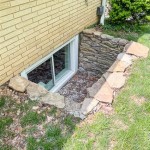How to Seal a Basement Concrete Floor
Sealing a basement concrete floor is a crucial step in protecting a home from moisture damage, improving air quality, and enhancing the overall usability of the space. Concrete, while durable, is porous and susceptible to absorbing water from the surrounding soil. This absorbed moisture can lead to a variety of problems, including mold growth, musty odors, and damage to finished flooring. Understanding the process of properly sealing a basement concrete floor is essential for any homeowner seeking to create a dry, comfortable, and healthy living environment.
The process involves several key steps, from preparation and cleaning to the application of the sealant itself. Each stage requires careful attention to detail and the use of appropriate materials to ensure a long-lasting and effective seal. Neglecting any aspect of the process can compromise the sealant's performance and necessitate costly repairs in the future. This article will outline the key aspects, providing guidance on how to efficiently and effectively seal a basement concrete floor.
Key Point 1: Preparing the Concrete Floor
The foundation of a successful sealing project lies in thorough preparation. A clean, dry, and properly prepared concrete surface is imperative for the sealant to adhere correctly and provide optimal protection. This stage typically involves a series of steps, starting with removing any existing coatings or contaminants.
Begin by removing any existing flooring, such as carpet, tile, or linoleum. All adhesives and residue left behind from these materials must be completely removed. Mechanical methods, like scraping and grinding, are often necessary to achieve a clean surface. Chemical adhesive removers can also be used, but it’s important to follow the manufacturer’s instructions carefully and ensure proper ventilation.
Next, address any cracks or imperfections in the concrete. Small hairline cracks can often be filled with a concrete crack filler compound. Larger cracks or significant damage may require more extensive repairs, potentially involving the application of a concrete patching compound or even professional repair services. It's crucial to fill these defects to prevent moisture from seeping through and compromising the sealant.
Once the cracks are repaired, thoroughly clean the concrete floor. Start by sweeping away all loose debris, dirt, and dust. Follow this with a thorough scrubbing using a concrete cleaner or degreaser. The specific cleaning product will depend on the types of stains or contaminants present. For oil stains, a specialized degreaser is essential. For general grime, a concrete cleaner with a pH-neutral formula is often sufficient.
After cleaning, rinse the floor thoroughly with clean water to remove any remaining cleaner residue. Allow the floor to dry completely before proceeding. The drying time will vary depending on the humidity and temperature, but it typically takes at least 24 to 48 hours. Use a moisture meter to ensure the concrete is sufficiently dry before applying the sealant. A moisture content of below 4% is generally recommended for most sealants.
Finally, consider etching the concrete floor. Etching involves using a mild acid solution to open the pores of the concrete, creating a better surface for the sealant to bond to. This is particularly important for smooth, non-porous concrete surfaces. Follow the etching product's instructions carefully, ensuring proper ventilation and protective gear. Rinse the floor thoroughly after etching and allow it to dry completely before applying the sealant.
Key Point 2: Selecting the Right Sealant
Choosing the appropriate sealant is critical for achieving the desired results. There are several types of concrete sealants available, each with its own strengths and weaknesses. The selection process should consider factors such as the intended use of the basement, the level of moisture exposure, and the desired durability and appearance of the finished floor.
Acrylic sealants are a common and relatively inexpensive option. They offer good water resistance and are easy to apply. However, they are less durable than other types of sealants and may require reapplication more frequently. Acrylic sealants are typically suitable for basements with low to moderate moisture levels.
Epoxy sealants are known for their exceptional durability and chemical resistance. They form a hard, durable surface that is resistant to staining and abrasion. Epoxy sealants are a good choice for basements that will be used as workshops or storage areas where heavy objects or chemicals may be present. However, epoxy sealants can be more difficult to apply than acrylic sealants and may require professional installation.
Polyurethane sealants offer a good balance of durability and flexibility. They are resistant to moisture, chemicals, and abrasion, and they can also withstand temperature fluctuations without cracking. Polyurethane sealants are a good choice for basements that are subject to significant temperature changes or that require a flexible sealant to accommodate movement in the concrete.
Silane and siloxane sealants are penetrating sealants that work by chemically reacting with the concrete to create a water-repellent barrier. These sealants do not change the appearance of the concrete and are often used when a natural look is desired. They are effective at preventing water from penetrating the concrete, but they do not provide a surface coating like acrylic, epoxy, or polyurethane sealants.
When selecting a sealant, it's also essential to consider the sealant's volatile organic compound (VOC) content. VOCs are chemicals released into the air as the sealant dries, and they can have negative health effects. Choose a low-VOC or zero-VOC sealant to minimize these risks, especially in enclosed spaces like basements. Always read the sealant's label carefully and follow the manufacturer's instructions for application and safety precautions.
Finally, consider the desired finish of the sealant. Some sealants offer a glossy finish, while others provide a matte or satin finish. Choose a finish that complements the overall aesthetic of the basement. It's also possible to apply a topcoat over the sealant to achieve a specific finish or add additional protection.
Key Point 3: Applying the Sealant
Proper application of the sealant is crucial for achieving a long-lasting and effective seal. The application process typically involves multiple coats, each applied according to the manufacturer's instructions. Attention to detail and adherence to proper techniques are essential to prevent common problems such as blistering, peeling, or uneven coverage.
Before starting, ensure that the concrete floor is completely dry and free of any dust or debris. It’s advantageous to have adequate ventilation in the basement to facilitate the drying process and minimize exposure to sealant fumes. Wearing appropriate protective gear, including gloves, eye protection, and a respirator mask, is highly recommended.
The sealant can be applied using a variety of methods, including a brush, roller, or sprayer. The best method will depend on the type of sealant and the size of the area being sealed. For small areas or intricate details, a brush is often the most precise option. For larger areas, a roller or sprayer can be more efficient.
When applying the first coat, work in small sections and apply the sealant evenly, avoiding puddles or thick spots. Overlap each section slightly to ensure complete coverage. Allow the first coat to dry completely according to the manufacturer's instructions before applying the second coat. The drying time can vary depending on the type of sealant and the ambient temperature and humidity.
The second coat should be applied in a similar manner to the first coat, ensuring even coverage and avoiding puddles. Some sealants may require a third coat for optimal protection, especially in areas subject to high moisture levels. Following the manufacturer's recommendations is crucial to achieve the desired results.
After applying all coats of sealant, allow the floor to cure completely before walking on it or placing any furniture or equipment in the basement. The curing time can range from a few days to a week or more, depending on the type of sealant. During the curing process, it's important to protect the floor from dust, dirt, and moisture.
Regularly inspect the sealed concrete floor for any signs of damage or wear. Small cracks or imperfections can be repaired promptly to prevent moisture from penetrating the concrete. Reapply the sealant as needed to maintain its protective barrier. The frequency of reapplication will depend on the type of sealant, the level of traffic, and the exposure to moisture and other contaminants.
Properly applied sealant will prevent water damage, resist mold and mildew growth, and improve the overall air quality of the basement. It is an investment in the longevity and health of the home, making the basement a more usable and comfortable space.

Basement Floor Sealer The Best To Use For Floors

How To Prepare Concrete For Sealers And Coatings V Seal Commercial Residential Blog

Sealing Basement Floors Why It Is Important To Seal Your

What To Know About Waterproofing A Concrete Basement Floor

How To Stain Concrete Basement Floor Diy Guide

Alternative Finishes For Interior Concrete Floors Decor

Colored Concrete Sealer How To Guide

How To Waterproof Your Basement True Value

Basement Floor Sealer Best Concrete Home Flooring Pros

Paint And Your Waterproofed Basement Floors Tom S Waterproofing Inc
Related Posts







